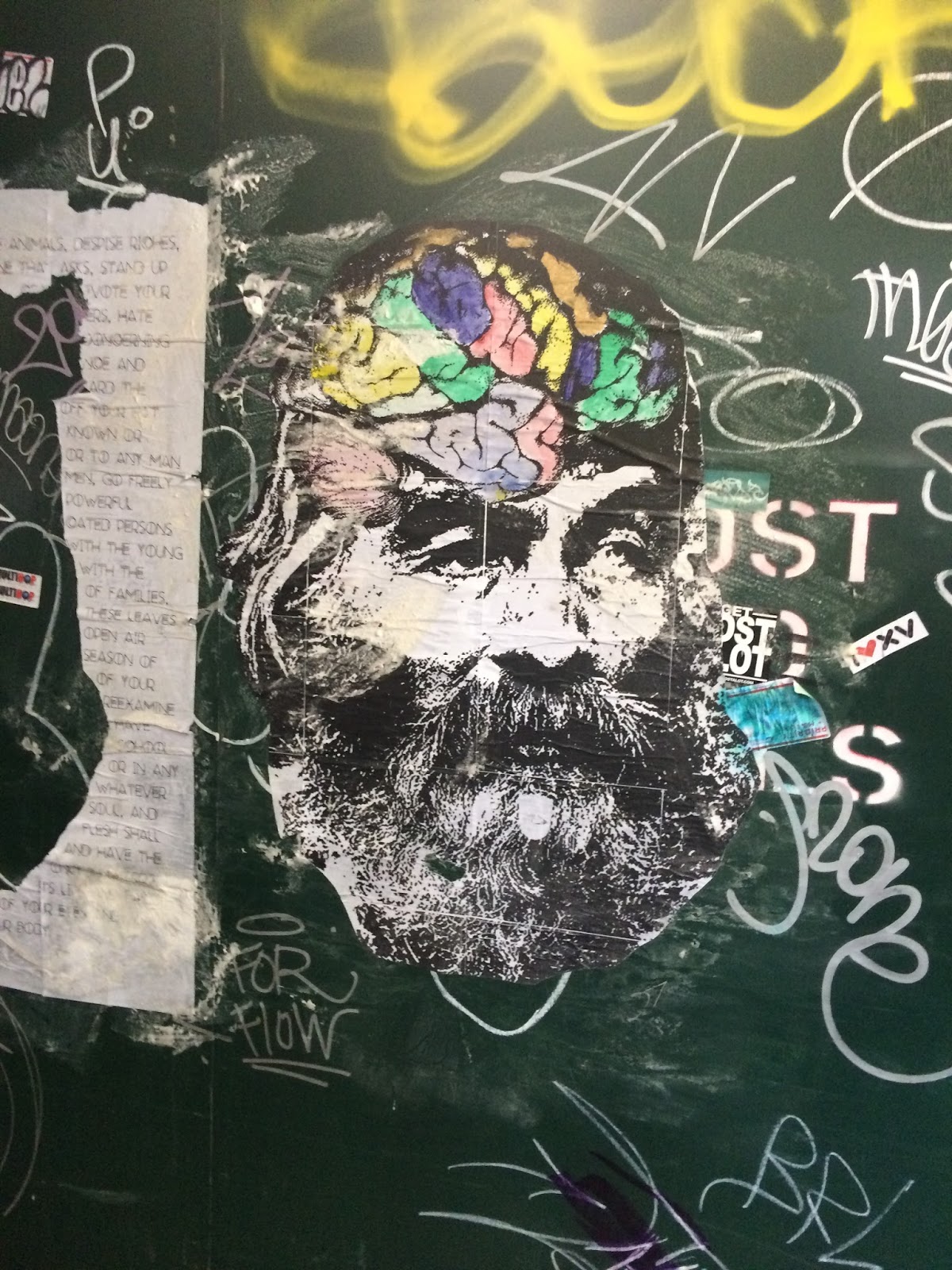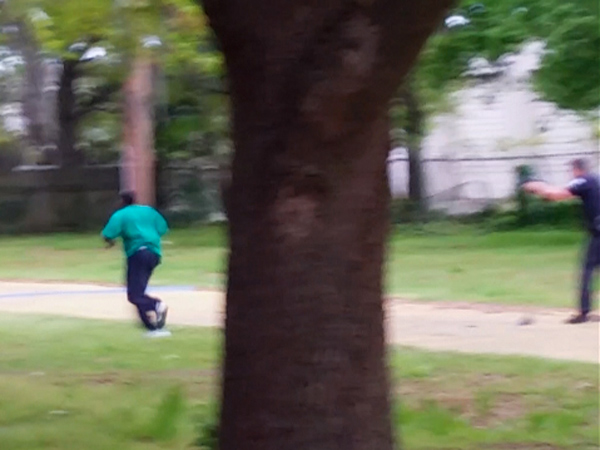 |
Greg Pardlo reading at his
book party in November 2014 |
This afternoon I learned upon signing onto Facebook that the poet
Greg Pardlo received the 2015
Pulitzer Prize for Poetry, for his 2014 collection
Digest, published by Four Way Books! This is a marvelous selection for an incredibly talented writer, and an excellent book of poems. CONGRATULATIONS TO GREG and to his publisher! I was fortunate to attend Greg's book launch last November at Dumbo Sky in Brooklyn, and after hearing him read and purchasing a copy I pored through the smart, inventive volume on the subway-and-PATH trip home. A graduate fellow of Cave Canem, Greg's first book of poetry,
Totem, was selected by Brenda Hillman for the
American Poetry Review/Honickman First Book Prize, and published by Copper Canyon Press. That collection offered more than a few clear signals that he was on his distinctive, poetic way. In addition to writing poetry and criticism, Greg is a translator, and brought
Pencil of Rays and Spike Mash by the Danish poet Niels Lyngsø into English. The other poetry finalists for this year's Pulitzer included the great poet Arthur Sze, for his collection
Compass Rose (Copper Canyon Press), and Alan Shapiro, for his collection
Reel to Reel (University of Chicago Press).
Other
Pulitzer Prize winners this year include fiction writer Anthony Doerr for his novel
All the Light We Cannot See (published by Scribner)
; playwright Stephen Adly Guirgis for his play
Between Riverside and Crazy (Suzan-Lori Parks was a finalist in this category for her play
Father Comes Home from the War (Parts 1, 2, 3)); David I. Kertzer for his biography
The Pope and Mussolini: The Secret History of Pius XI and the Rise of Fascism in Europe (Random House); reporter Elizabeth Kolbert in the general nonfiction category for her book
The Sixth Extinction: An Unnatural History (Henry Holt); and composer Julia Wolfe in the music category for her oratorio for chorus and sextet
Anthracite Fields (Red Poppy Music/G. Schirmer, Inc.). In the news category, no paper received an award for print coverage of the murders of Michael Brown in Ferguson, Missouri or of Eric Garner in Staten Island, or any other similar state-sanctioned murders that occurred last year, nor for reportage or commentary on the subsequent protests, but the
St. Louis Post-Dispatch, once part of the Pulitzer family of newspapers, did receive a Pulitzer in the Breaking News Photography category for its photojournalist coverage of the aftermath of Brown's death. Congratulations to all the finals and winners!
***
I don't think I posted congratulations for
Claudia Rankine, who was awarded both this year's
National Book Critics Circle Award in Poetry, and just the other day the
Los Angeles Times Book Prize, for her timely invaluable book
Citizen (Graywolf Press). This collection of innovative prose and verse texts had earned an unprecedented nomination in the criticism. Other recipients of the NBCC awards included Marilynne Robinson in fiction for
Lila (FSG); David Brion Davis in history for
The Problem of Slavery in the Age of Emancipation (Knopf); Roz Chast in autobiography for her graphic novel
Can't We Talk about Something More Pleasant? (Bloomsbury); John Lahr in biography for
Tennessee Williams: Pilgrimage of the Flesh (W. W. Norton & Co.); and the late Ellen Willis in criticism for
The Essential Ellen Willis (University of Minnesota Press). There were three other awards presented: Military veteran Phil Klay, who had won the National Book Award for fiction last fall, received the John Leonard Prize for his collection of short stories
Redeployment (Penguin Press); Nobel Laureate Toni Morrison received the Ivan Sandrof Lifetime Achievement Award; and Alexandra Schwartz received the Nona Balakian Citation for Excellence in Reviewing.
At the Los Angeles Festival of Books, which took place last week, other winners of book prizes included actor LeVar Burton, who was honored with the Innovator's Award for his successful, ongoing efforts to increase reading among children; Andrew Roberts in the biography for
Napoleon: A Life (Viking); Jeff Hobbs in current interest for
The Short and Tragic Life of Robert Peace: A Brilliant Young Man Who Left Newark for the Ivy League (Scribner); Siri Hustvedt in fiction for
The Blazing World (Simon & Schuster); Valeria Luiselli, with the Art Seidenbaum Award for First Fiction, for her book
Faces in the Crowd (Coffee House Press); Jaime Hernandez in the Graphic Novel/Comics category for
The Love Bunglers (Fantagraphics Books); Adam Tooze in history for
The Deluge: The Great War, America and the Remaking of the Global Order, 1916-1931 (Viking); Tom Bouman in the mystery/thriller category for
Dry Bones in the Valley (W. W. Norton & Company); Pulitzer Prize-winner Elizabeth Kolbert in the science/technology category for
The Sixth Extinction: An Unnatural History (Henry Holt & Co.); and Candace Fleming in the young adult category for
The Family Romanov: Murder, Rebellion, and the Fall of Imperial Russia (Schwartz & Wade/Random House Children’s). Congratulations to all the finalists and winners!
***
This month also brought the announcement of the
2015 John Simon Guggenheim Foundation fellows. The list is always a compendium of major and emerging figures in the broad areas the foundation supports, which include creative arts, humanities, natural sciences, and social sciences. Among this year's cohort in creative arts and humanities are a number of friends, colleagues and acquaintances, including
Jeffrey Renard Allen, Brent Hayes Edwards, Thomas Sayers Ellis, Percival Everett, Cathy Park Hong,
Rowan Ricardo Phillips, Christina Pugh, Beryl Satter, and
Akhil Sharma. Other literary figures receiving awards include Dan Beachy-Quick, Maud Casey, Vikram Chandra, Megan Daum, Matthew Dickman, Kristoffer Diaz, Rivka Galchen, Anthony Marra, Cate Marvin, Bernadette Mayer, Joshua Mehigan, Kevin Powers, Alex Ross, and Kenneth Warren. Also, visual artists such as Mel Chin, filmmakers like Akosua Adoma Owusu, philosophers like the aesthetician Dominic McIver Lopes, critics like G. Gabrielle Starr, composers like AACM member and chronicler George Lewis, and social scientists such as my former colleague the eminent psychologist Jennifer Richeson all received fellowships. Congrats to all the recipients!




















































